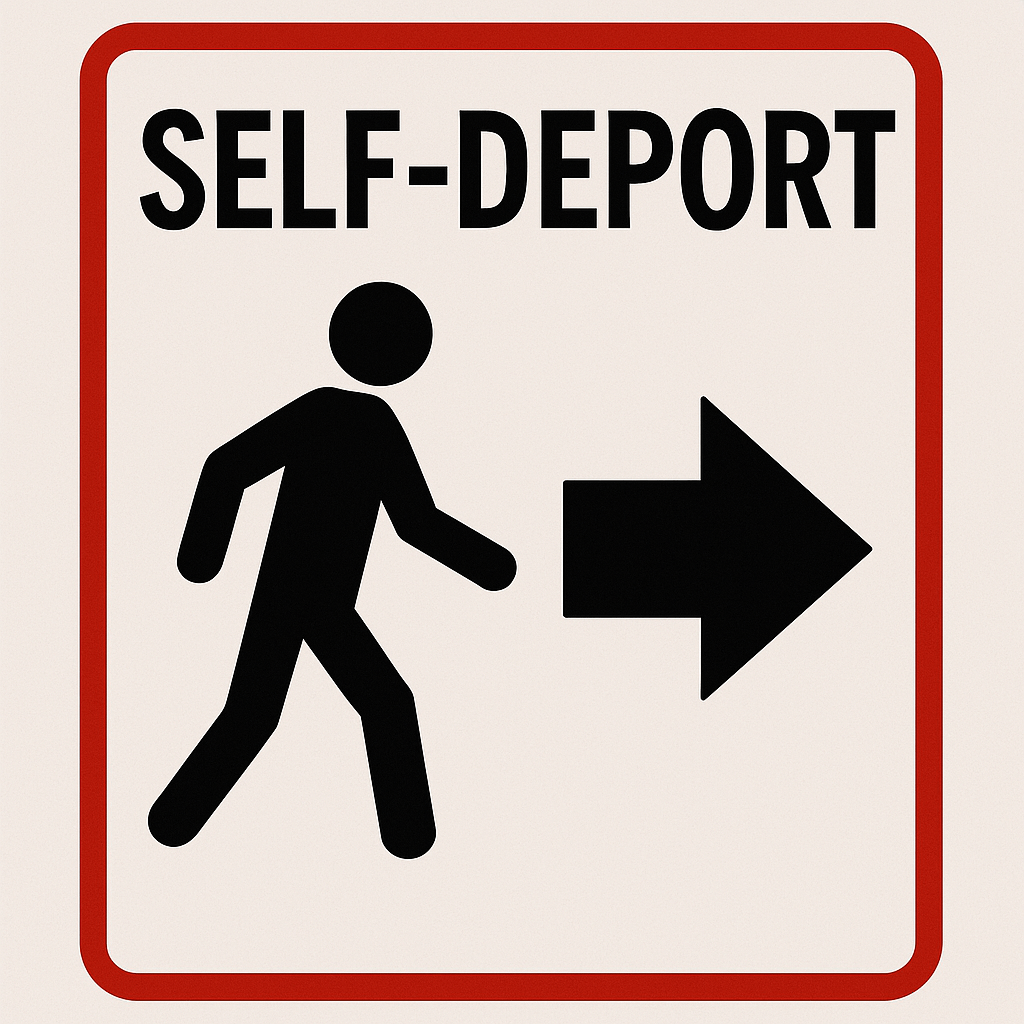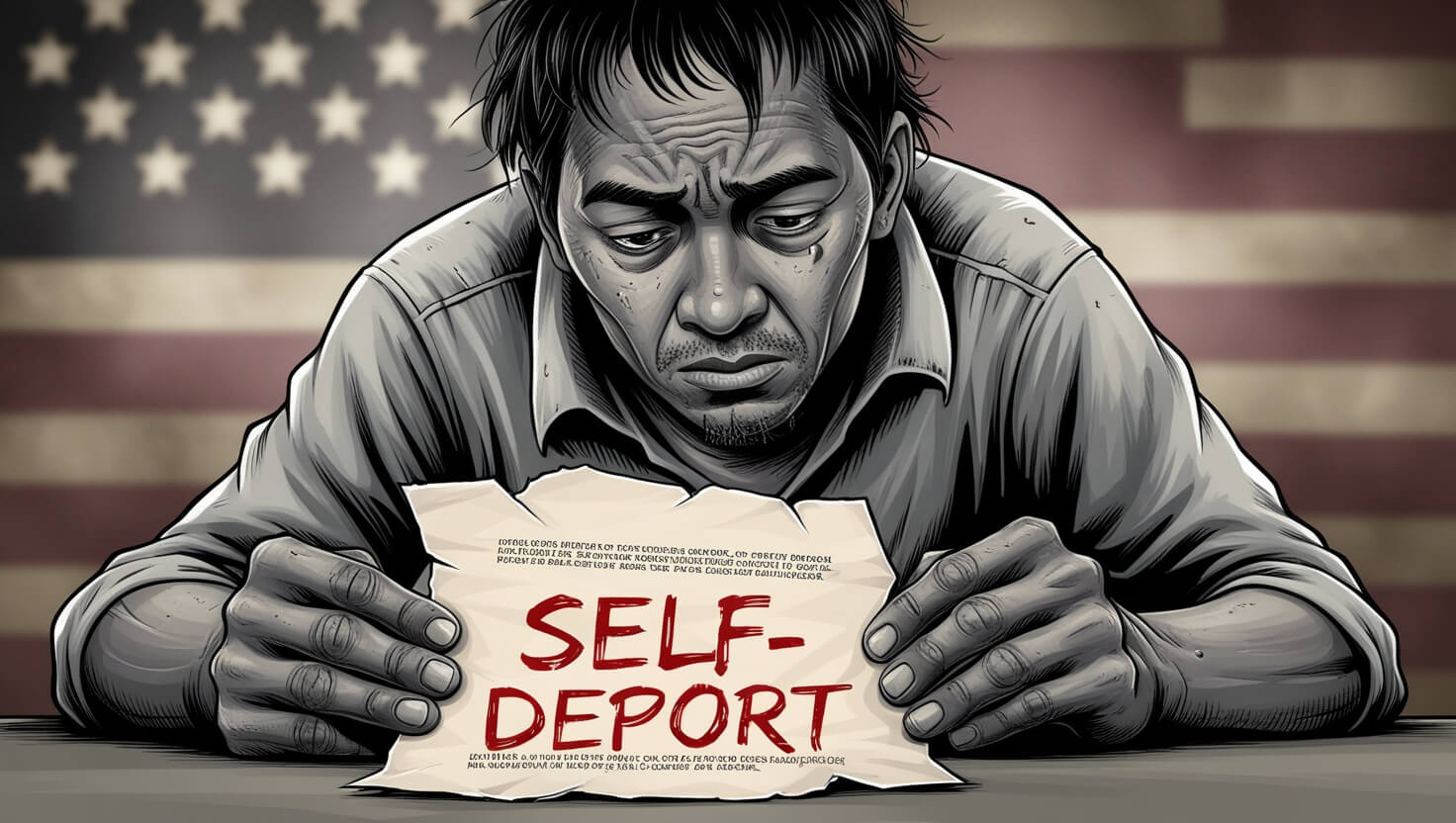In this article, I will discuss the Why the US Wants Undocumented Immigrants to ‘Self-Deport’.’
- What is Self-Deportation?
- Why the US Wants Undocumented Immigrants to ‘Self-Deport’
- Economically Efficient Enforcement
- Public Relations
- Deterrence Strategy
- Scarcity of Government Resources
- Legal Compliance
- Historical Background
- Common Methods Used to Promote Self-Deportation
- Criticisms and Controversies
- Current Status and Future Outlook
- Conclusion
This strategy incentivizes voluntary departures without formal removal proceedings. The strategy indicates a new direction of policy in immigration control aimed at reducing undocumented populations through social and legal mechanisms rather than expensive enforcement actions.
The policy continues to generate controversy and heated public discourse.
What is Self-Deportation?
Self-deportation is defined as an approach that seeks to induce an undocumented immigrant to leave a country without the use of government enforcement.

Rather than practicing forced removal and employing raids, these policies construct “beds” that are increasingly difficult to “lie” in. Some measures may involve constraining access to work, housing, education, and even public amenities.
The strategy aims at creating just enough pressure for the target population to return home without having to engage in advanced deportation procedures, thus lightening the load on enforcement and legal services.
Why the US Wants Undocumented Immigrants to ‘Self-Deport’

Here are the bullet points that provide a succinct explanation of why US officials want undocumented immigrants to self-deport:
Economically Efficient Enforcement
Self-deportation reduces the financial cost of formally deporting people.
Public Relations
Gives an option that shifts the balance to the left while still providing control of immigration, thus not catching ire from voters who want a more hands-on approach.
Deterrence Strategy
The goal is to make life harder for undocumented immigrants to dissuade current and future undocumented immigrants.
Scarcity of Government Resources
Every case cannot be pursued by immigration agencies, so self-deportation helps ease system pressure.
Legal Compliance
Suggesting a voluntary exit aligns with observing immigration laws without the application of excessive force.
Historical Background
Innovative self deportation is a term which came to prominence in the 90s but got mainstream attention during the 2012 US presidential election when candidate Mitt Romney brought it up.
The thought was based upon the pre-existing policies of making life easier for undocumented immigrants from a legal and social perspective. There were mechanisms like E-Verify and laws at the state level barring employment and welfare that formed part of this strategy.
Though self deportation for undocument immigrants is politically widely accepted and discussed, it has not translated into policy at the federal level. Self deportation has remained a theme of US politics around immigration reform.
Common Methods Used to Promote Self-Deportation
Some of the common techniques avtively used by the U.S. government in order to promote self-deportation include:
Employment Verification Systems
Mechanisms like E-Verify make it impossible to obtain legal employment for undocumented immigrants, thereby forcing them to leave on their own.
State and Local Laws
Restrictive laws concerning access to certain public services are issued by some states for undocumented individuals.
Increased Immigration Enforcement
Regular audits of immigration status, name checks, and local-federal collaboration such as 287(g) agreements foster an environment of fear and anxiety which drives voluntary exit.
Criticisms and Controversies
Self-deportation policies have received sharp and divided criticism. Many claim that these policies create a hostile atmosphere which encourages discrimination and profiling on the basis of race, particularly against Latinos and immigrants.
Detractors claim such policies create fear, separate families, and cause emotional strife without dealing with the integral issues of migration. Many studies also challenge the effectiveness of these measures, particularly because a large number of undocumented migrants decide to remain in the country regardless of the oppressive environment.
Human rights defenders contend that such policies violate human rights by lacking basic respect for people’s humanity and dignity, exacerbating existing inequalities, and lacking equitable solutions to immigration problems.
Current Status and Future Outlook

As of April 2025, the United States has sharpened its emphasis on self-deportation policies as part of its immigration strategies. This approach aims to incentivize undocumented immigrants to leave the country voluntarily through a mix of enforcement policies and technological innovations.
Technological Initiatives
The DHS (Department of Homeland Security) announced the introduction of the CBP Home app, a new version of the CBP One app which had its functionalities widened for this purpose. The app allows undocumented migrants to enter and notify their intention to exit the U.S. voluntarily. Secretary Noem stressed that those opting for self-deportation might have chances of returning legally, while adverse failure would result in enforced deportation and permanent eviction from the country.
Policy Changes
Cite: f0search0⦁turn\cite: 2search2
The administration set out to revoke the legal status of more than half a million migrants of Cuba, Haiti, Nicaragua, and Venezuela under the CHNV program who were granted parole. This cohort has been given a voluntary 30-day window starting March 25 to exit. Noncompliance would open them to arrest and forced removal.
Enforcement Measures
In conjunction with these measures, the country has considerably bolstered military forces along the southern border.
Currently, there are around 10,000 active duty personnel and 2,500 National Guardsmen mobilized with Stryker armored vehicles and surveillance drones on illegal crossing routes. The focus of this militarization is to reinforce a tough enforcement position on illegal crossings.
Legal Actions and Criticism
These policies have received an extensive amount of pushback. There is an emerging case that argues these policies are violating the rights of people seeking asylum and raises humanitarian issues. Rising legal battles accompany executive restrictions with federal judges granting universal stays halting some of the executive measures, thereby increasing the need for the supreme court to decide on these policies.
Looking Ahead
Adoption of migration policies based on enforcement and self-deportation techniques, shows movement in the direction of easier enforcement. No matter how you look at it, these policies are not without their moral and efficiency questions. Without a doubt, public dialogue and court cases will shape the design of these policies in the coming months and years.
Conclusion
Ultimately, the U.S. encourages self-deportation in order to reduce the undocumented immigration problem without the expense and backlash of mass deportation.
The intention is to prompt self-initiated departure through legal and social pressures. While proponents view it as a sensible solution, critics contend it results in human rights violations and neglects racial injustice.
Richard Falk’s concerns, alongside others, showcase an unwavering debate, which further suggests that future policy will be determined by legal repercussions, societal perception, and political governance.












